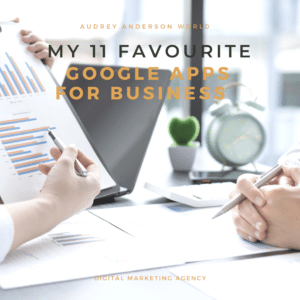
Lash Serums That Work My Favorite – 2023 Review
Lash Serums That Work and are my favourite – A Review We may get paid a commission if you buy something after clicking on one of our affiliate links here
What Is SEO Marketing

How to turn into a Customer Magnet?-And How Do I Reduce Customer Acquisition Costs using SEO? But, more importantly, what is SEO Marketing?
Your Business, or Personal Brand Home Plate, where you’ve crafted your story and manifesto. You’re the author of the story that the www will see you. There is no such thing as “like” and outside opinions. I have mastered my work on this website, and I am now more confident to share my work on any Social Media platform.
You are here because you want to learn how to attract new customers and build your profile on the growing number of social media platforms. So I want to start with the foundation or the basic principle that you need to begin with, and that’s your WEBSITE.

Lately, I’ve heard the exact phrase, again and again, and again, “Does it make sense to have a blog if I can work on social media? Do I care about my blog even though I’ve got a lot of followers on Instagram?” It is easier to think about today and take advantage of what social media gives us; your Blog’s evergreen and searchable. Although your content on social networking sites is lost within a few minutes, blogs will always be there, and after a while, they will have even more value.
You are the one who controls the technical changes with utterly total freedom. On your blog, whether it is professional or personal, you have the freedom to decide what to change, when to change, and why to change something from a technical point of view.
You are controlled by algorithms, other people’s decisions, and how they want to show your content on social networks.
A few months ago, let me be practical: Instagram released a new algorithm that today allows users to see only a lower percentage of content compared to the past based on presumed interest. However, this supposed interest is determined by an algorithm, which directly affects the posts’ general engagement.
Sometimes social media sites implement changes for the benefit of users, but sometimes they are not. If you make any technical changes to your Blog, you are solely responsible for deciding which ones and making sure those who read your blog return over and over and maybe share your content.
Anyone who intends to do SEO Marketing – from a D2C Brand or B2B Brands and Individuals that we all want to deliver results through SEO, the most common stories we hear in our conversations and invest in technology.
You are investing resources to produce SEO content, and they would love to see their content performing well, but progress has been stagnating in moving up search rankings and bringing traffic and leads.
When strung together and followed accurately, these principles increase and enhance the likelihood of accomplishing the results you are looking for.
Free Consultation – SEO, Local Google My Business Digital Marketing, PPC
SEO (search engine optimization) aids in the natural growth of the website’s traffic. You can turn traffic into paying customers without spending a fortune on advertising if you attract the right people. Fortunately, if you recently bought a company that has never taken SEO seriously, you might be sitting on a gold mine.
However, as thousands of other companies are vying for the same spot at the top of SERPs (search engine results pages), getting to the top can be difficult. To beat them and reduce your acquisition costs, you must first comprehend the target market as well as the search engines themselves.
Generating a plan will turn you into a customer magnet.
SEO ostensibly entails optimizing your digital identity so that it appears at or near the top of search engine results pages (SERPs). But it’s all about getting to know your customers’ problems and then positioning yourself as the best possible solution.
It’s not about stuffing keywords all over your website or blog; it’s about being an expert on the relevant subjects that your customers are interested in.

Google manages more than 75% of all Web traffic, and its search algorithm is optimized to provide the best possible experience for users. If SEO were just about the number of publications or keyword density, Google would fail because the algorithm would be too simple for the game, leaving users vulnerable to unscrupulous companies, scammers, and worse.
Google’s New Algorithm Update Has Resulted in New Best Practices
A successful SEO strategy is a traffic magnet converting visitors to potential new customers or clients, thereby lowering customer acquisition costs and sales. The great news is that SEO is a low-cost option for that start-up business. You don’t need an expert or costly software; all you need is a simple plan that you can monitor and refine over time. Anything else, such as keyword clusters software, is primarily free.
Let’s take a step back and see the SEO approach in a broader sense. If you’ve never done SEO before, it’s easy to get overwhelmed, so think about it in two ways: passive and aggressive.
Passive SEO entails adhering to Google’s guidelines. This mainly entails making a site map, writing meta descriptions, page titles, and other similar tasks, and ensuring that Google can gather data from your website. Consider it as laying the groundwork for consumers to find you.
Consider it setting the foundation for potential customers to find you.
What Is Active SEO Marketing?
You do active SEO regularly to remain vital, valuable, and beneficial to your customers. The higher you rank on Google, the more you satisfy the need behind customers’ search queries. As a result, press, consumer behaviour, competitor operation, and industry dynamics affect active SEO. Let’s look at how SEO operates in detail.
Before we get started with the principles, keep the following in mind:
When people speak about “content” in the context of digital marketing, they almost always mean blogging. I also refer to it when talking about Facebook posts, Instagram, LinkedIn, YouTube, TikTok and Twitter. However, the following guidelines refer to all of your material, including your home page, product or service pages, and blog posts.
The foundations of successful SEO have also changed as search engines have become more sophisticated over time. It’s no longer acceptable to produce content with a high volume of relevant keywords solely. Instead, search engines reward content that is the most relevant and high-quality for the customer, so most of the following concepts are based around that.
Figuring out what issues, barriers, difficulties, and pain points your customers face—then offer your unique solutions by creating content. For example, I started by going through daily conversations with customers; I wrote them down and started a blog post to answer a group of similar questions or a rather big question.
You can also use Social listening tools as a jumping-off point; you can use your favoured method (Ahrefs, SEMrush, etc.) to find keywords with the highest conversion potential.
Most of the Brands we talk with have a deep understanding of their customers’ issues. Still, when we analyze the pages on their website, their content falls short of representing this, as we discussed in our article on the marketing workshops we do with clients. As a result, potential buyers cannot comprehend your product’s benefits and solutions.
People want to be understood, so empathy is a standard marketing term. And openly communicating your target audience’s concerns and pain points directly on your website is one of the most dependable ways to prove you understand and have empathy for them.
There are a few things you can do to find out what issues your customers are having:
Your material becomes more convincing if you can articulate their issues better than they can themselves.
Raise the stakes in the customer’s mind by highlighting the issues that might arise if not resolved. This is another aspect of producing user-centred, empathetic content.
To improve your chances of ranking high on Google, you need to know what your target customers are interested in. We interviewed our customers, surveyed them, studied the market, read feedback and testimonials before thinking, and spoke like our customers in my previous company. We knew how to view ourselves as the perfect solution to our customer’s issues, and we learned how to do so in their language.
This helps to colour your keyword analysis as well. For example, you can use keywords to fit popular grievances, pain points, or problems, then rewrite your original copy to jump to the top of search results.
By emphasizing what will happen if your prospects do not fix their dilemma, you reinforce your understanding of their problems and build the tension needed to encourage them to engage in a solution.
We’ve found a trend where SaaS companies emphasize their product features rather than their product benefits.
You make it easy for customers to understand how you can fix their dilemma by clearly describing the benefits they would get if they select your product.
You can only discuss technology, functionality, or design features after you’ve covered the core benefits.
Your content has a place for describing your product’s features, but features aren’t what get customers to purchase. As a result, we emphasize benefits first, followed by technology, functionality, and design features.
Google monitors metrics such as time on the website, bounce rate, and other helpful performance indicators to see how visitors interact with the site’s pages.
So, if you send someone to a website with a bad user interface, or if a user has to visit ten pages on your site before finding what they’re looking for, it can hurt your SEO.
As a result, adhering to the user interface best practices is critical, both in web design and your content.
Google monitors metrics will increase if your website has a successful UX design. As a result, people will spend more time on your websites, bounce rates will drop, and conversion rates will undoubtedly rise.
Content marketing can be applied for lead generation across multiple social media platforms, and content produced with a channel in mind always performs best.
Suppose you want to draw traffic to a piece of content, social media or community promotion, for example. In that case, you might write thought leadership articles, in-depth stories, or expert interviews — exclusive, engaging content that readers would want to share.
If you’re writing content for SEO, you’ll probably write list blogs, competitor comparison bits, or in-depth “how-to” posts, which are all formats that search engines want to see in search results.
I Love Ubersuggest.
Type your target keyword or keywords into the Ubersuggest tool, and look at the formats of articles and pages that come up to get an idea of what kind of user interface your piece can have. Since Google thinks the top-ranked links have a decent experience, it’s usually a good idea to arrange the content similar to what appears.
If you structure your content or a part of it with FAQs (and use FAQ markup), it’ll be more likely to appear as a Featured Snippet at the top of search results. Not to mention, responding to your customers’ most popular questions is an excellent way to eliminate objections and concerns that could cause a conversion to be delayed.
To do so, you can use the data you’ve gathered when researching your customers’ pain points, Google’s “People Often Ask” segment and any frequently asked questions your sales team gets about your product.
This typically entails going over the fundamentals:
Simply writing about what you do isn’t enough. Consider all of the divergent and related problems your clients are dealing with. At the time, my company developed mobile applications for small businesses and provided content on any subject related to mobile marketing. We may be said to have written the book on it. As a result, if someone searched for a query about mobile marketing, we were consistently in the top five results on Google.
Your prospects will appreciate you as an expert if you add value by solving problems or providing advice in your profession. Press and other organizations that could connect back to your site and increase its authority, which will bring more traffic to you, will benefit as well. And the more you assist others, the more likely they are to purchase from you.
As previously stated, building a page around a specific keyword was enough to get a page to start performing well in search.
Modern search engine algorithms now consider the relevance of a website to a subject and its associated entities. The following two features, in particular, effectively signal relevancy:
Search engines reward websites that comprehensively cover their subject category to cut a long story short.
We also work with clients who have various content pieces on a particular subject that compete with one another. There can be ways to make several pieces and merge them into a single outstanding piece of material — something that will rate far higher than any individual page on their own.
Stale material can also be removed from your website due to the consolidation process. If you have content that isn’t performing well, it’s always easier to remove it entirely so that both consumers and search engines can concentrate on the content that does.
Finally, the material must be revised regularly. Because of the nature of the SEO game, if you have content that ranks for high-value keywords in your niche, your rivals will eventually try to outrank you for those keywords. Therefore, you will remain ahead of the competition by reviewing yours regularly.
In keeping with the evolution of search engine algorithms, word count and keyword density have become less important over time. Instead, writing for the consumer and focusing on consistency has become the gold standard for establishing authority in your field.
The principal methods to improve the authority of your content include:
Active SEO is a long-term strategy. It can take six to twelve months for Google to notice your work and you to start climbing the ranks. The key here is to maintain the momentum. Create the content on a tight schedule covering several mediums and channels; reach out to the news, partners, and others with a publishing platform; and pitch guest blog posts.
Participate in podcasts or build your own. Network and expand, use social media to promote your SEO goals, and never miss an opportunity to write, speak, or stream about your business.
SEO and content marketings are the same. SEO will help you get in front of your clients, but you must follow through with your promises. Don’t add to the pile of boring, repackaged content that no one wants on the Internet. Instead, consider SEO as part of a customer-centric business model in which you assist customers in becoming more competitive. The greater your digital presence, the more authoritative it becomes. The more important you or your brand become using SEO, the less money you’ll have to spend on acquisition and attracting customers.
Finally, if your content aims to generate leads and sales for your business, it’s a good idea to adhere to CRO best practices.
Some of these CRO best practices include:
They effectively make a straightforward call-to-action, articulate the advantages of their service, and, as discussed in our article on Landing Page Best Practice, make it simple for their prospects to understand what they should do next.
The chances of acquiring new customers through SEO content marketing via your Blog are here, and we’ve seen how useful they can be when done correctly. So, if you’re trying to figure out how to boost your efforts to bring in leads via quest, we hope this article can assist you in getting there.
Get updated with the latest news about our company’s achievements and activities

Lash Serums That Work and are my favourite – A Review We may get paid a commission if you buy something after clicking on one of our affiliate links here

Rodan and Fields Consultant + Rodan and Fields Find a Consultant Should I join the Rodan Fields Consultant Program? EVERYTHING YOU NEED TO KNOW ABOUT BECOMING A CONSULTANT FOR RODAN

The best sunscreens The Best Sunscreens – so you can be sure you’re getting the best protection possible. AAW Your ultimate guide to the Best sunscreens CHICHI KAWA – Summer

My best hair care products We may get paid a commission if you buy something after clicking on one of our affiliate links here on the site on the best

Retinaldehyde The Ultimate Guide to Retinaldehyde – the Older Sister of Retinol: The type of retinoid you use matters if you are looking for a retinoid to treat acne, premature

My 11 Favorite Google Apps For Business If you haven’t already, I invite you to check out the G Suite platform for your business and my Favourite Google Apps For
